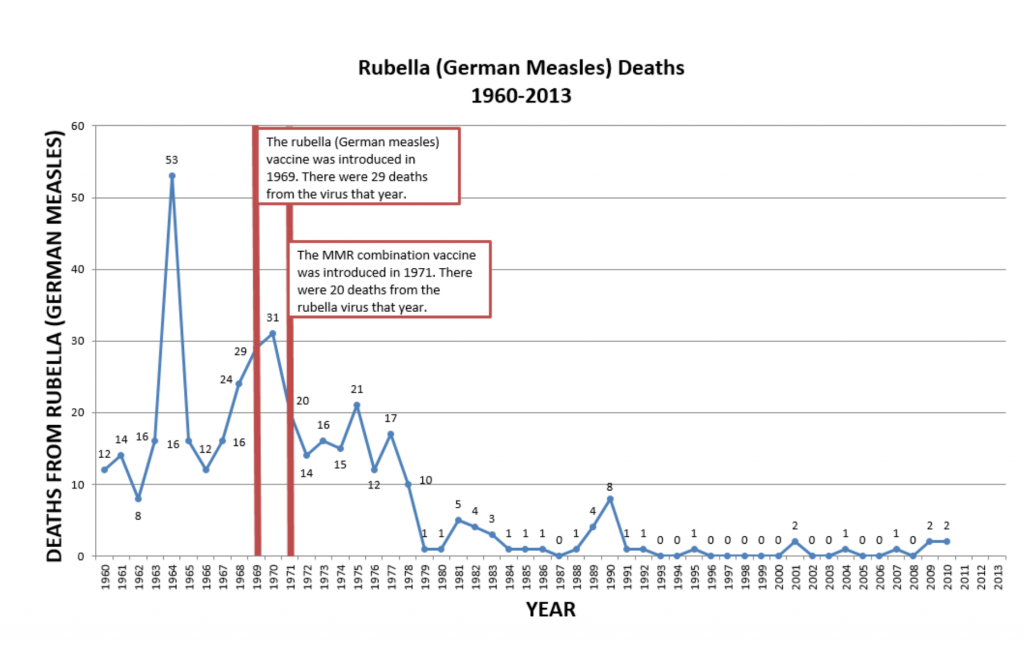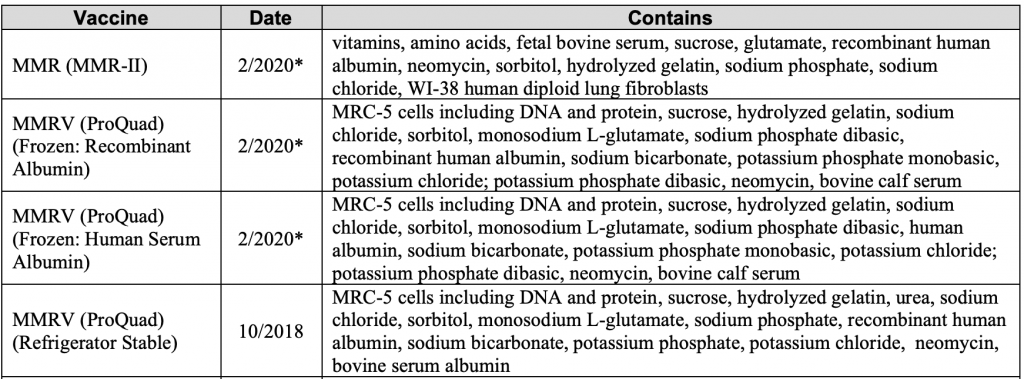When is the MMR recommended in the U.S.? It is given at 12-15 months & 4-6 years. (Unless you are traveling out of the country it can be given as young as 6 months.) (cdcschedule)
What is rubella? “In children, rubella is usually mild, with few noticeable symptoms. For children who do have symptoms, a red rash is typically the first sign. The rash generally first appears on the face and then spreads to the rest of the body, and lasts about three days. Other symptoms that may occur 1 to 5 days before the rash appears include:a low-grade fever, headache, mild pink eye (redness or swelling of the white of the eye), general discomfort, swollen and enlarged lymph nodes, cough, runny nose. About 25 to 50% of people infected with rubella will not experience any symptoms” (cdc/rubella)
“Rubella is a contagious disease caused by a virus. It is also called “German measles,” but it is caused by a different virus than measles. Rubella was eliminated from the United States in 2004….Today, less than 10 people in the United States are reported as having rubella each year. Since 2012, all rubella cases had evidence that they were infected when they were living or traveling outside the United States.” (cdc/rubella)
So that doesn’t appear to be too bad especially if up to half of people infected with rubella do not experience any symptoms, and less than 10 people each year are getting it. Here is the graph of how many deaths there are from Rubella each year in the US. 8 deaths total in the US since 1996 through 2010.
Your chances of getting this disease today in the US is less than 1 in 33,100,000. (331 million in the US divided by 10 diseases per year.) Chances of death from this near 0.

So now that you know the risk is pretty low. What are the risks from the MMR Vaccine. Let’s take a look at the vaccine insert.
“Measles inclusion body encephalitis {4} (MIBE), pneumonitis {5} and death
as a direct consequence of disseminated measles vaccine virus infection have been reported in immunocompromised individuals inadvertently vaccinated with measles-containing vaccine.” (MMRinsert) So obviously immunocompromised people should not get this vaccine.
“There is a risk of fever and associated febrile seizure in the first 2 weeks following immunization with M-M-R II vaccine….Transient thrombocytopenia has been reported within 4-6 weeks following vaccination with measles, mumps and rubella vaccine.” (MMRinsert)
Here are some of the adverse effects reported after the vaccine:
- Atypical measles
- Fever
- Syncope, malaise
- Headache, irritability
- dizziness
Other side effects include:
- regional lymphadenopathy
- vomiting
- regional lymphadenopathy
- bronchial spasm
- otitis media
“Encephalitis; encephalopathy; measles inclusion body encephalitis (MIBE) subacute sclerosing panencephalitis (SSPE); Guillain-Barré Syndrome (GBS); acute disseminated encephalomyelitis (ADEM); transverse myelitis; febrile convulsions; afebrile convulsions or seizures; ataxia; polyneuritis; polyneuropathy; ocular palsies; paresthesia.” (MMRinsert)
Yikes ok well that shows that there is a risk you child could get measles, encephalitis, GBS (paralysis) and febrile convulsions. I mean these things sound pretty bad for side effects, is this worth it?
A big concern about this vaccine is that it is made with aborted fetal tissue!, “propagated in WI-38 human diploid lung fibroblasts.” This is also a live vaccine. “M-M-R II vaccine has not been evaluated for carcinogenic or mutagenic potential or impairment of fertility.” (MMRinsert)
What else is in this vaccine?

I hope this gives you a little more incite about the Rubella part of the MMR. Checkout the Measles Article and the Mumps Article for more.